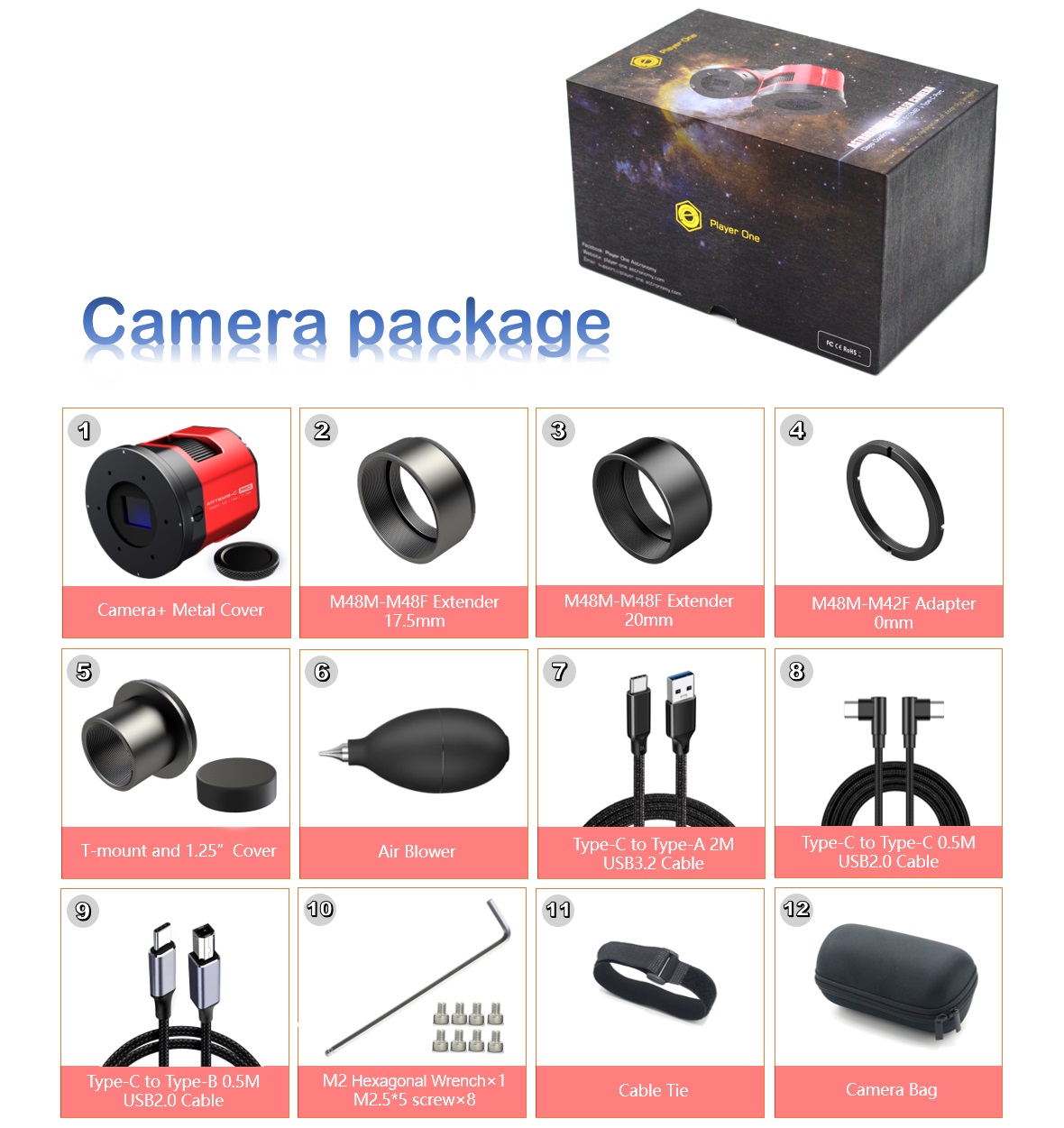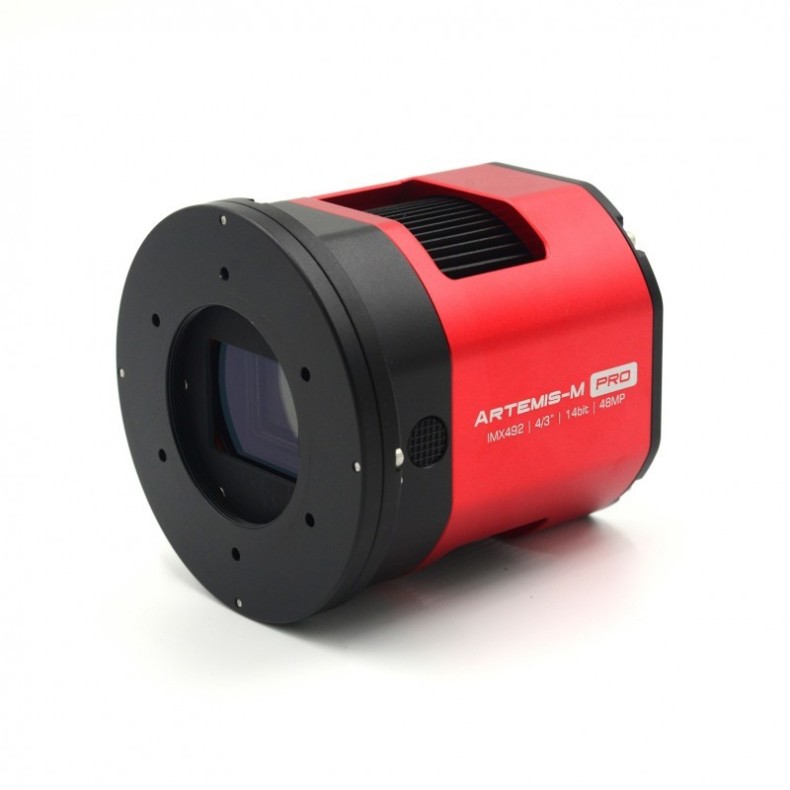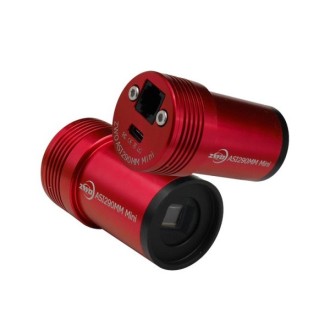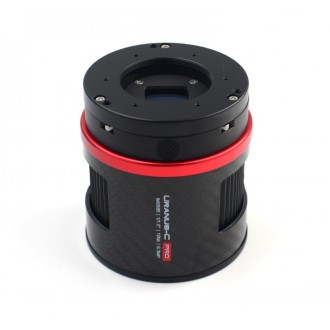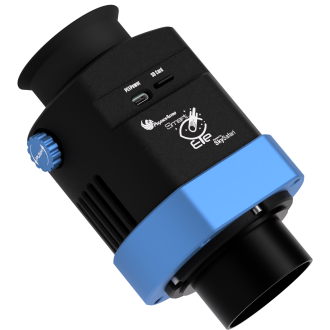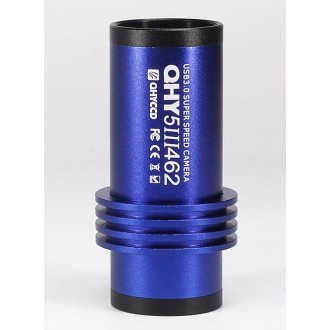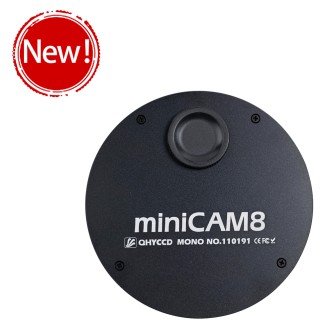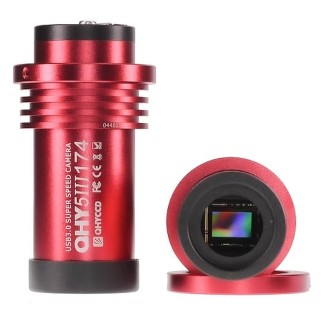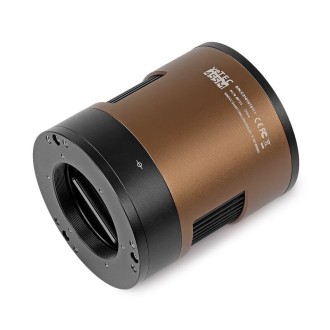Deliver it 8/15 days
Player One ARTEMIS-M (IMX492) PRO Mono refrigerated Camera
ARTEMIS-M Pro refrigerated camera IMX492
The Deep Sky refrigerated camera range is the most advanced product range in the history of Player One. They started the project from 2021, through many modifications and rebuilds, they have achieved this final version.
| Carrier | Description | Estimated Delivery | ||
|---|---|---|---|---|
 |
Home delivery - International | Home delivery - International |
Thursday, 8 May - Thursday, 15 May |
|

Home delivery - International
Home delivery - International
Estimated delivery:
Thursday, 8 May - Thursday, 15 May
It brings the latest technology and design to a very successful camera range.
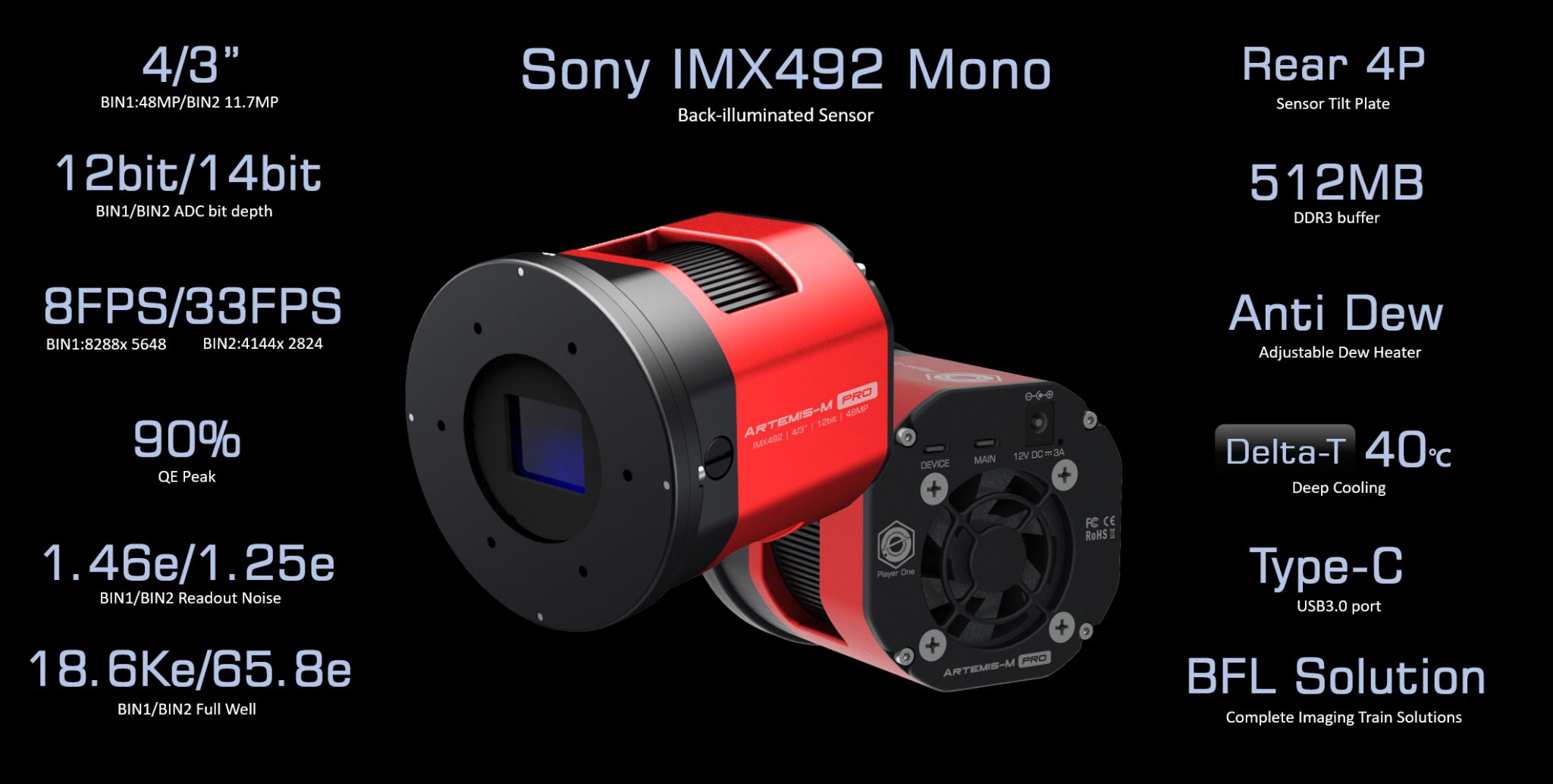
Power supply is not included in the camera package, high quality 12V 5A power supply link in the product link.
Download drivers and software: http://player-one-astronomy.com/service/software/
Download manuals: http://player-one-astronomy.com/service/manuals/
DESCRIPTION
New state-of-the-art design
The polygon as a regular hexagon is very Player One, Player One wants your camera to be as beautiful and practical as possible.
After much testing, Player one established the final style, which uses a scientific and technological octagon to build the main body line, complemented by round chamfers for both rigidity and flexibility.
The front piece is round to avoid diffraction in the RASA. The positive red, reminiscent of a summer fire, is combined with the subdued and stable black, and the ultra-thin glazing process over the entire surface gives the camera a luxurious and cool look, while maintaining the Player One style.
The Artemis-M Pro (IMX492) refrigerated chamber has been developed by Player One Astronomy and is designed for advanced deep sky imaging.
It adopts the 4/3″ format Sony IMX492 color sensor The pixel size of 2,315 um allows a well depth of 18.6 Ke with a total of 48 MP (the resolution is 8288*5648) and the diagonal is 23.2 mm.
4-point tilting plate
When photographing deep sky objects, the use of the sensor tilt plate is now facilitated by the appearance of the 4-point adjustment that can be used from the back of the camera and not from the front as in many other brands' cameras.
The 4-point adjustment makes it easier to know which corner needs to be adjusted. An integrated high-density sponge pad can block the light from the side gap without any leakage.
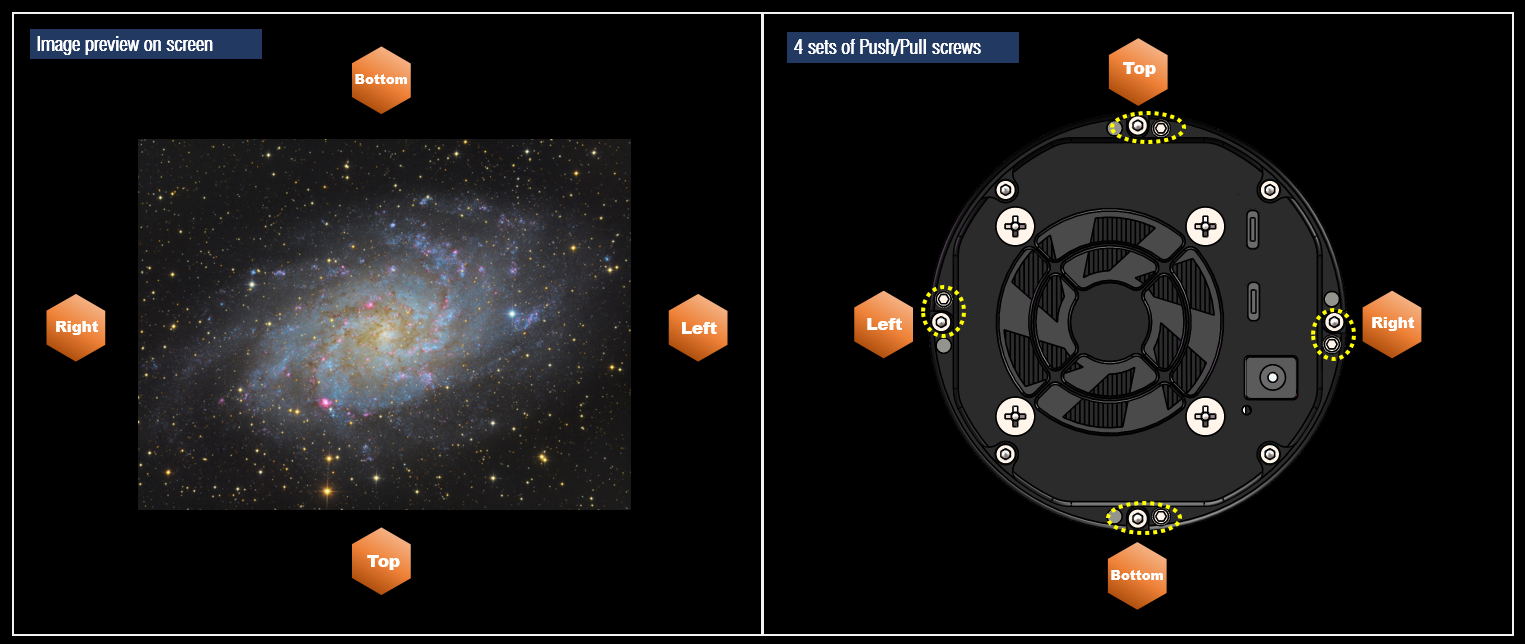
To understand the 4-point adjustment method, we have made an example for users:

Cooling sensor
Player One series refrigerated chamber uses 2-stage TEC refrigeration unit, after improving the structure design to reject heat in the chamber chamber, the Delta-T chamber can reach more than 40 ℃.
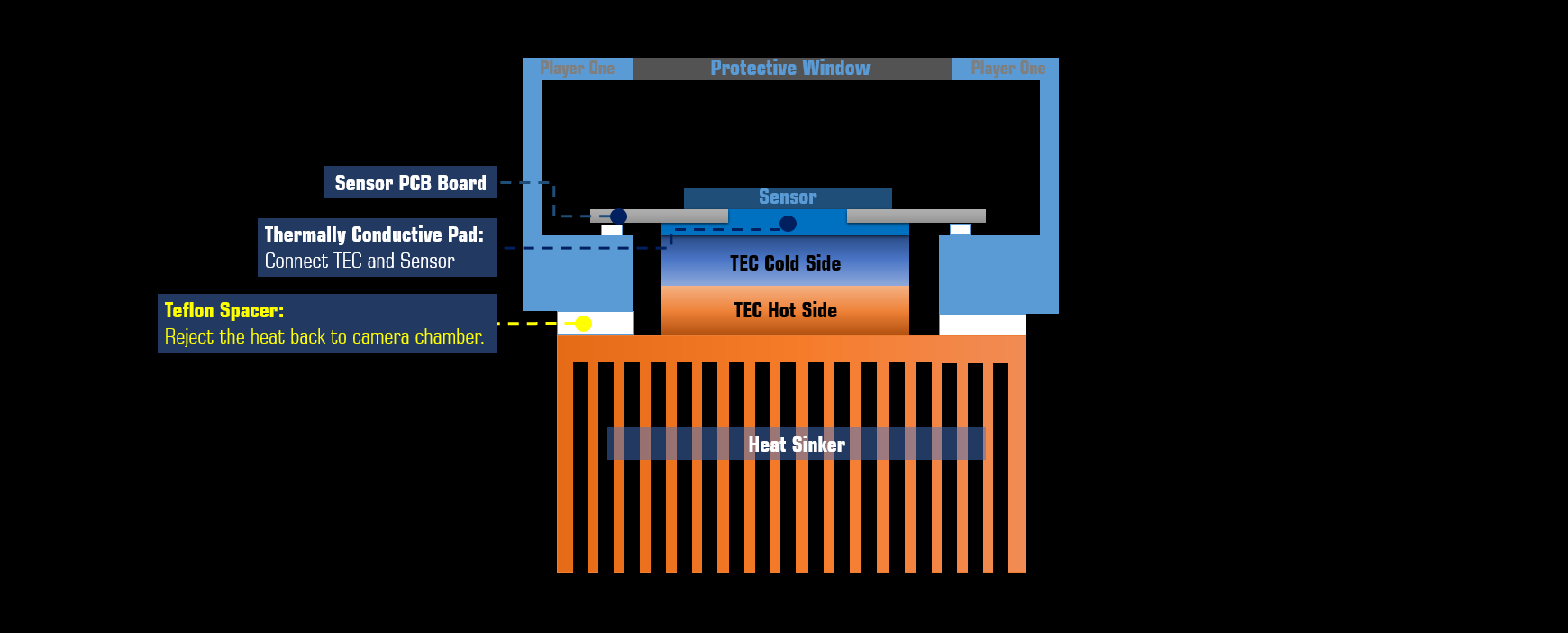
512MB of DDR3 cache
As an improvement, the DDR3 cache of the cooled cameras is increased to 512MB. It helps stabilize and secure data transmission, effectively prevents frame loss and greatly reduces playback noise.
With the DDR3 cache, the camera no longer has high demands on computing requirements, it will still perform excellently even when connected to a USB 2.0 port.
STARVIS Technology
Artemis-M Pro (IMX692) cooled camera based on Sony's STARVIS technology, which is the back-illuminated pixel technology used in CMOS image sensors.
4/3 format
The Artemis-M Pro cooled camera has a 4/3″ format (19.2 mm * 13 mm), this size is very popular for Deep Sky imaging.
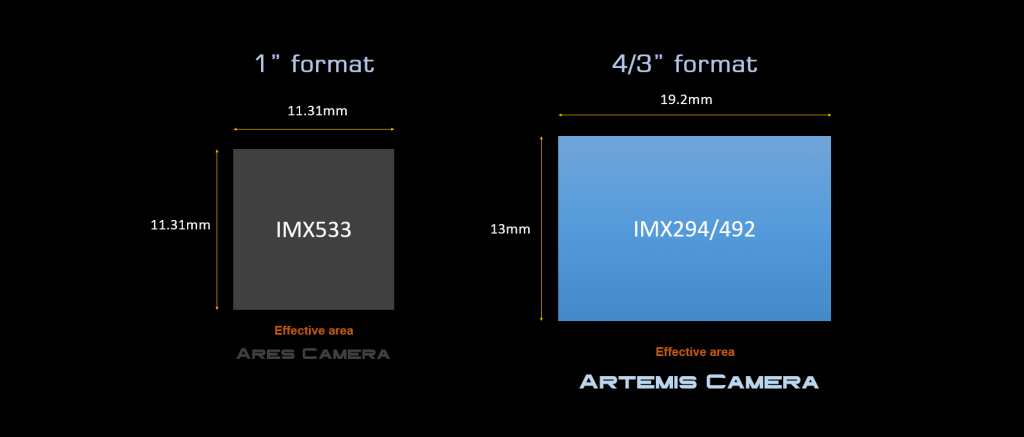
Pixel BIN mode
The IMX492 sensor has a native pixel of 48 megapixels, you don't need to unlock anything and you don't need any technology to do so. Once you know this, the following description will be very easy to understand.
12-bit depth: IMX492 has a 12-bit on-chip ADC. When using BIN1 mode, the IMX492 has 48 megapixels, the pixel size is 2,315 um and the bit depth is 12 bits (4096 levels).
14-bit depth: if the BIN2 hardware mode is used, the IMX492 will have 11.7 megapixels, the pixel size is 4.63 um and the bit depth is extended to 14 bits (16,384 levels).
BIN1 and BIN2 will also cause changes in fullwell, FPS and playback noise.
BIN software supports BIN2, BIN3 and BIN4 modes (and we provide Sum BIN and Average BIN), but Hardware BIN has only BIN2 (Sum BIN) mode.
USB Type-C port
The rear of the cooled camera has 2 Type-C data ports and a 5.5 × 2.1 mm 12 VDC power port.
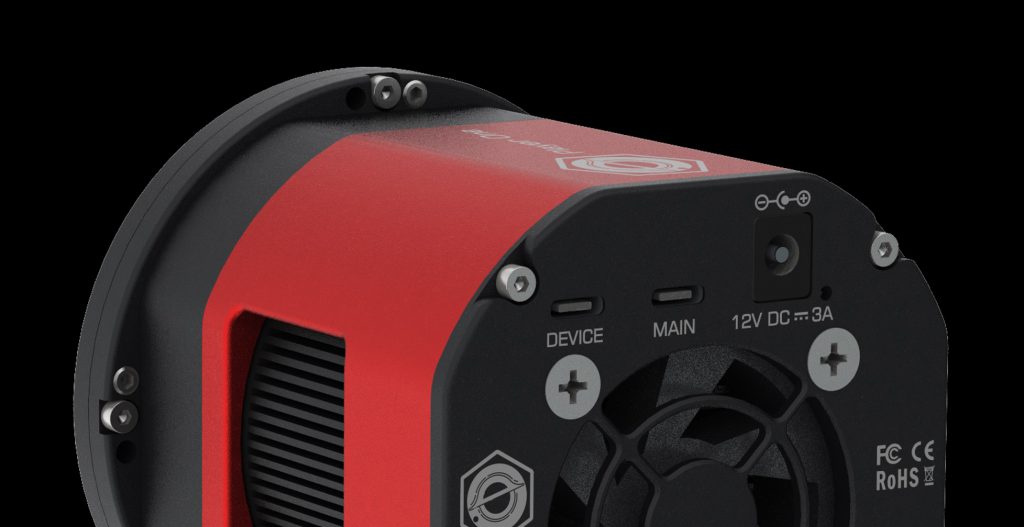
The main data port supports USB3.0 protocol, the camera can operate at 33ips in RAW8 mode. The Type-C port is easier to connect when mounting the imaging equipment at night.
When recording images, since the actual writing speed will be affected by the writing speed of the hard disk itself, when the writing speed of the hard disk is slow, the recording may not reach the theoretical speed. It is recommended to use a high quality SSD for recording data to take full advantage of the camera's performance.
The camera has a 12V DC5.5*2.1mm port to provide sufficient power to the TEC cooling system. If you do not need to turn on the cooling, just connect the main type C port, the camera will work as an uncooled camera.
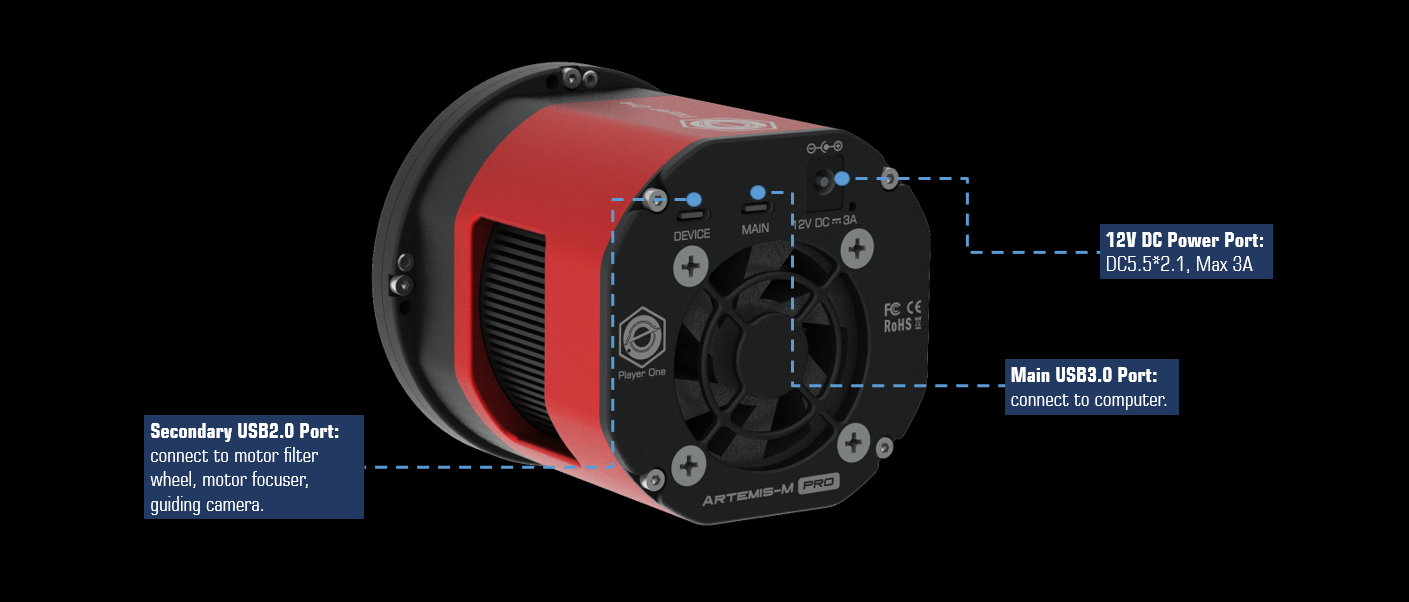
Use of standard cable.
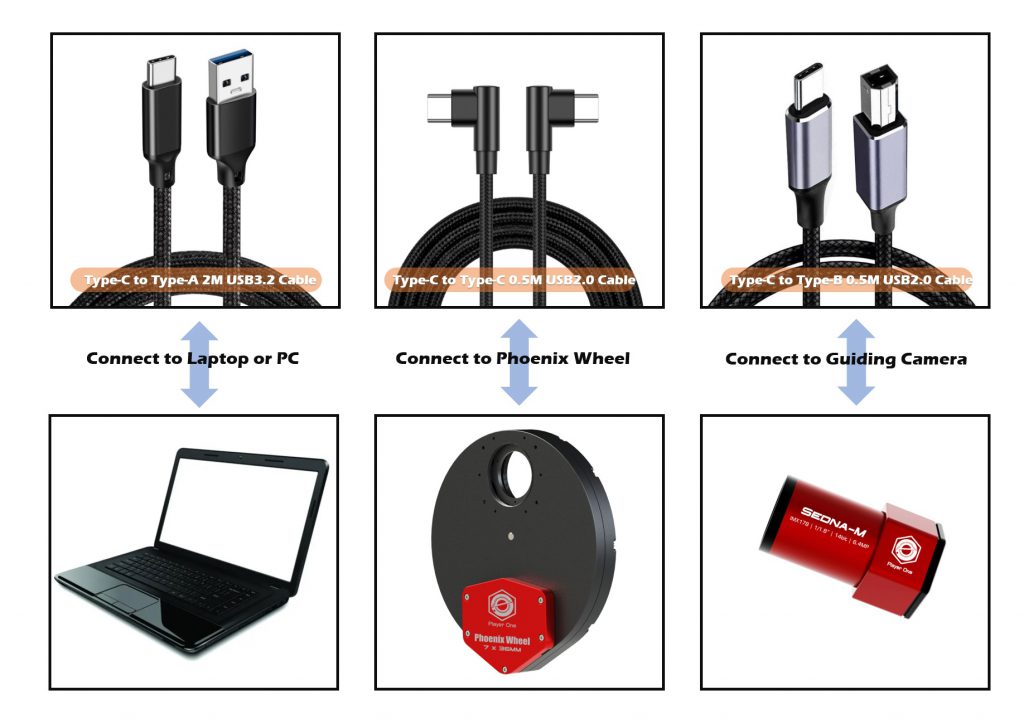
Anti-fogging heating and cooling system
In the ASCOM window, we provide 3 adjustable parameters: target temperature, fan speed and anti-fogging power.
Delta-T standard: 40 ℃ (±2 ℃), when ambient temperature is 30 ℃, fan speed 100%, superheat 0%.
Recommended Delta-T settings: 35 ℃ below ambient temperature, fan speed 70%, superheat 10%, power consumption 40-60%.
The cooling fan speed is also adjustable, the default value is 70% speed.
The problem of fog is the biggest enemy of astroimaging, the camera has integrated anti-fog heater in front of the camera. The heating power is adjustable.
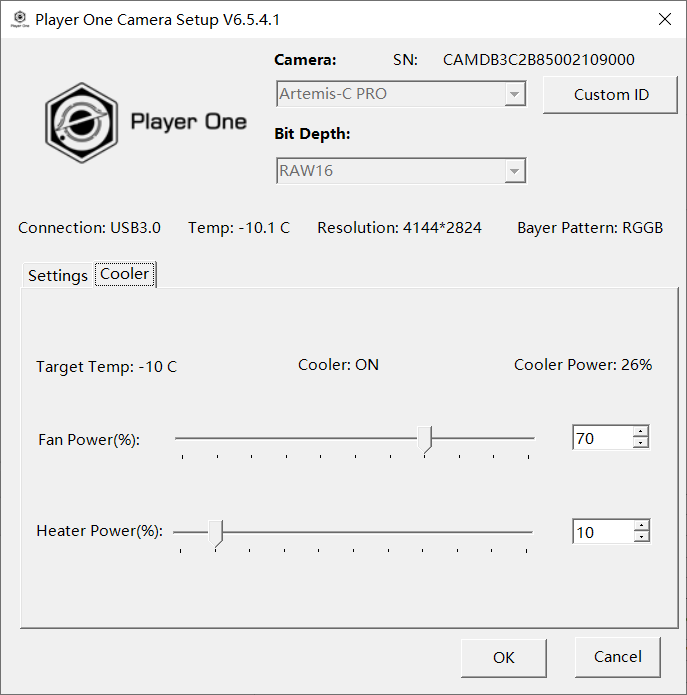
Overvoltage and overcurrent protection mechanism
Player One cameras ensure the safety of your camera and other equipment with overvoltage and overcurrent protection mechanisms.
Performance
At gain=0, the camera has a dynamic range of 13 stops and a full well capability of 65.8 Ke, the read noise is 7.8e.
HCG opens with gain=120, the camera has a dynamic range of 12.97 stops and 14.5Ke, read noise drops to only 1.8e.
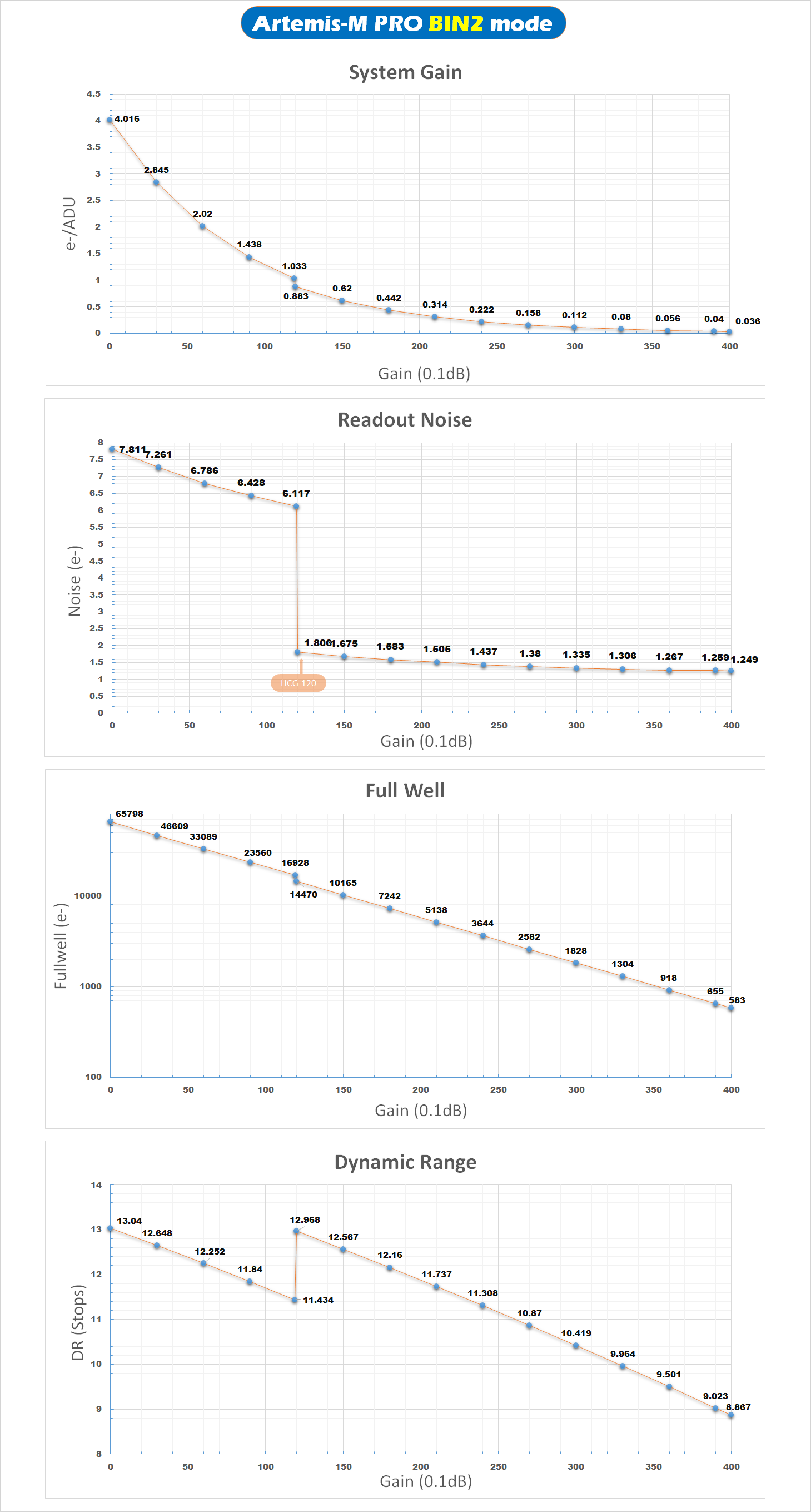
BIN1 mode
In BIN1 mode, Artemis-M PRO starts with gain 110.
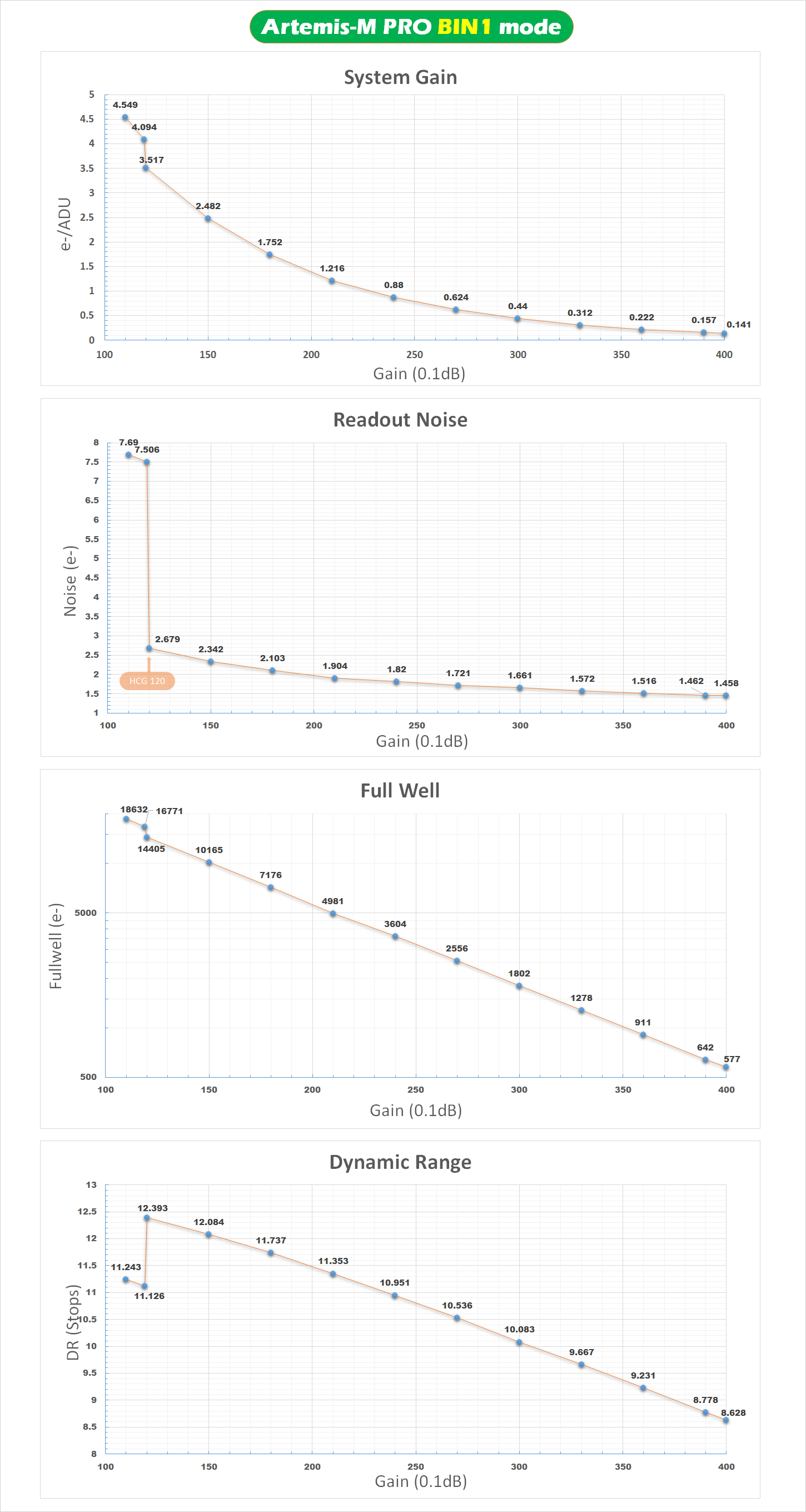
Playback noise
As for the reproduction noise, we solemnly promise that all values are obtained from real tests. And for users, they can use Sharpcap 4 for testing. SC4 has a function called Sensor Analysis, which provides a very simple way to test read noise.
Player one writes a tutorial on our site: https://player-one-astronomy.com/service/manuals/
If you are interested in testing the playback noise, you can do it yourself, which is very simple.
Image by Dark
Here is a Darkness from the Artemis-M PRO, Gain = 0, Offset = 5, Exposure = 300 s, Temp = -20 ℃
Dark current
The dark current is only 0.0004 e/s/pix at -20℃ and 0.0021e/s/pix at 0℃. In the whole curve, the dark current looks almost like a straight line, which can prove that the Poseidon camera is of very good quality.
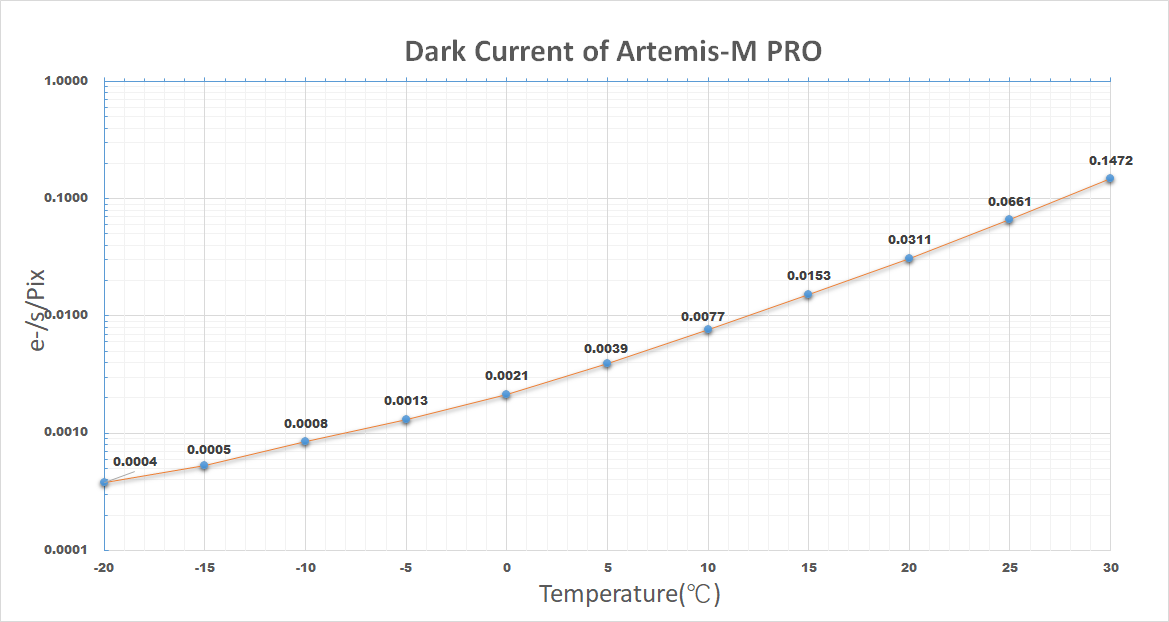
EQ curve
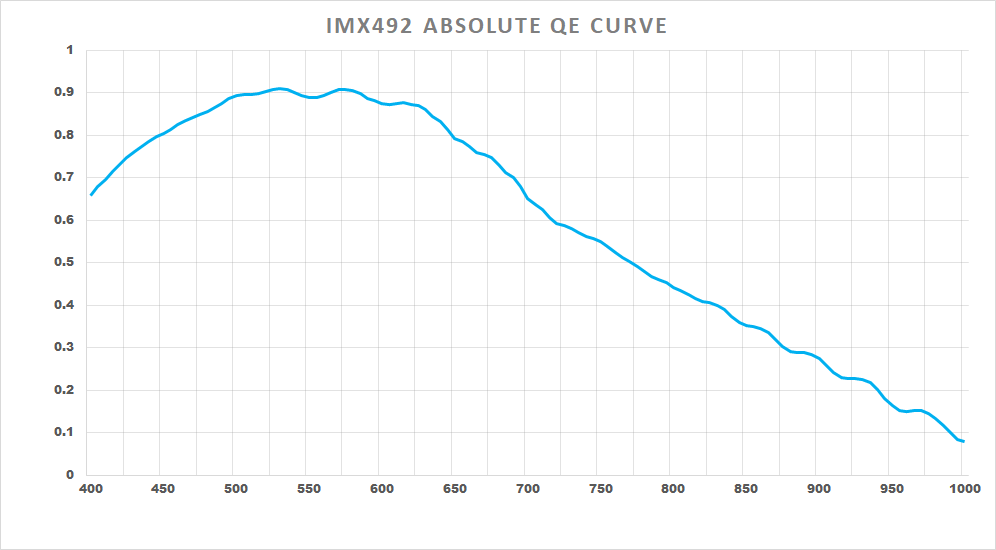
SPECIFICATIONS
- Sensor: New SONY IMX492 4/3" CMOS (mono)
- Diagonal: 23.2mm
- Total pixels: 48 megapixels
- Max. resolution
8288×5648 @bin1
4144×2824 @bin2
- Pixel size: 2.315μm
- Sensor size: 19.2mm×13mm
- Image frequency:
8FPS@BIN1(10bit)
33FPS@BIN2 (10bit)
- Shutter: Rolling shutter
- Exposure range: 32μs-2000s
- Reproduction noise:
7.7-1.46e @bin1
7.8-1.2e @bin2
- Full well
18.6Ke @bin1
65.8Ke @bin2
- QE: ≈90%
- ADC
12bit @bin1
14bit @bin2
- Cooling system: high quality 2-stage TEC cooling component
- Power requirements: 12V - 3A Max (optional)
- Delta T: 40℃ ± 2℃ (at room temperature)
- Protective window: D46*2MM High-quality AR Plus (anti-reflective) multilayer coating
- Data port: USB3.0/USB2.0 Type-C
- Adapter: M48X0.75, 2", 1.25
- Rear focus: 17.5mm, 12.5mm (without tilt plate)
- Diameter: 90mm
- Weight: 650g
Delivered items
